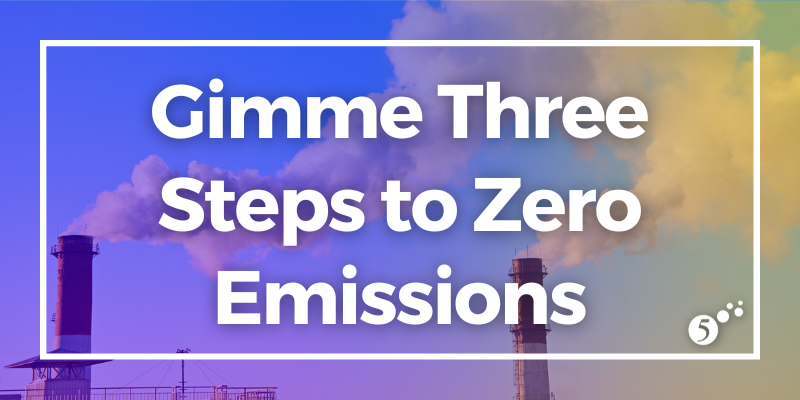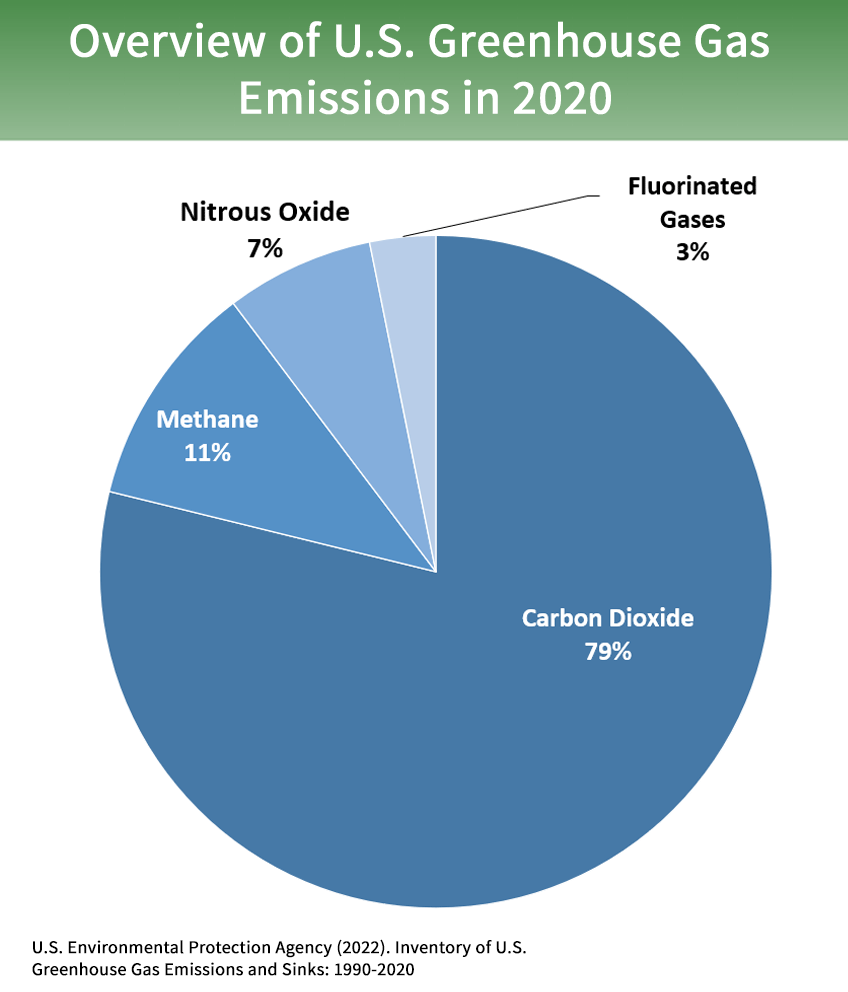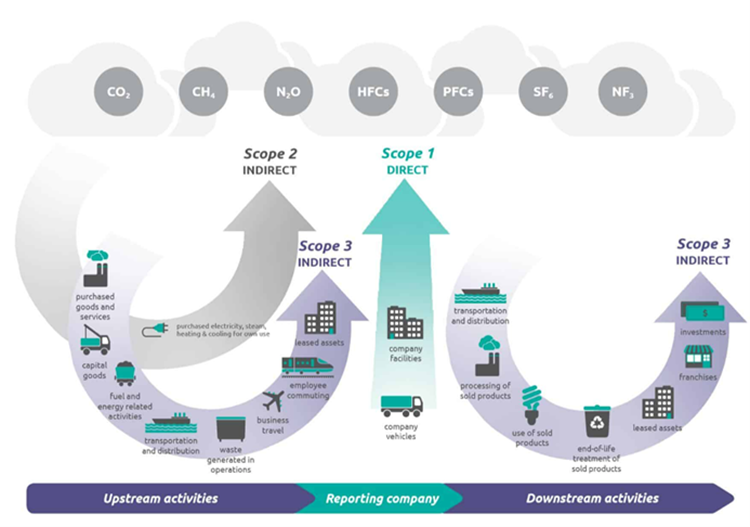
A greenhouse gas (GHG) is any gas in the atmosphere that absorbs thermal energy (heat) emitted from the earth’s surface and reflects it back to the earth’s surface. Certain gases serve as a trap for this thermal radiation which warms the atmosphere. GHGs include water vapor (H2O), carbon dioxide (CO2), methane (CH4), nitrous oxide (N2O), and ozone (O3). While all these gases are naturally occurring, human activity since the advent of the Industrial Revolution has significantly added to the GHGs that are generated through various machines and industrial processes. Today, businesses and other organizations are trying to do their part to fight climate change by limiting and reducing the GHGs that are produced and released into the atmosphere.
As shown in Figure 1, three gases account for 97% of all GHG emissions in the US. According to the US Environmental Protection Agency (EPA), nearly 6,000 metric tons of carbon dioxide equivalents were released into the atmosphere in 2020. Carbon dioxide is created through the combustion of fossil fuels such as coal, natural gas, gasoline, propane, and oil. It is also generated through many manufacturing processes. According to a study by McKinsey & Company, the cement industry alone is responsible for approximately 7% of all CO2 emissions. While fewer tons of methane and nitrous oxide are emitted as compared to carbon dioxide, these gases create more atmospheric warming per ton than CO2. Methane is produced by livestock and agricultural processes and from the decay of organic waste in solid landfills. Nitrous oxide is produced during various agricultural and industrial processes, fossil fuel combustion, and wastewater treatment.

Figure 1: Overview of US Greenhouse Gas Emission in 2020 from epa.gov
The first step for any organization to reduce its GHG emissions is to understand and identify how GHGs are produced as a result of their operations. This is often referred to as an entity’s carbon footprint. Once these emissions are identified and baselines are established, both GHG production and reductions can be tracked over time. This process of quantifying and tracking the amount of GHGs that are directly and indirectly produced as a result of an organization’s operation is known as carbon accounting. This information provides the basis for understanding and managing a business’ impact on climate change and also as a reporting tool for various stakeholders. It is becoming more common for organizations to establish specific sustainability goals related to carbon emissions. Many businesses, local governments, and other institutions have pledged to reduce their carbon footprint by certain percentages. Clearly, in order to make these commitments, an organization needs to quantify its carbon footprint and track emissions through a carbon accounting process. It is also important to remember that there are different types of GHG emissions that are recognized by the EPA and other organizations.
Over the last 20 years, it has been common to distinguish and categorize the different kinds of GHG emissions an organization creates through its operations and across its value chain. These are known as Scope 1, Scope 2, and Scope 3 emissions. An illustration of these three emissions categories is shown in Figure 2 and discussed in more detail below.

Figure 2: Scope 1, 2, and 3 Illustration from epa.gov
Scope 1 Emissions: Direct GHG emissions generated from sources that are directly controlled or owned by an organization. This includes emissions from burning oil and natural gas, gasoline and diesel fuel used in vehicles and stationary equipment, as well as propane and lubricants associated with boilers and furnaces, and other equipment. Scope 1 emissions can be quantified and tracked by the amount of these fossil fuels consumed over a specific time period.
Scope 2 Emissions: Indirect GHG emissions from the purchase of electricity and steam from utilities and third-party suppliers. Note that steam and electricity produced from an on-site co-generation unit would be considered Scope 1 emissions. Scope 2 emissions can be tracked through the amount of electricity and steam procured to support a facility’s operation over a specific time period.
Scope 3 Emissions: Indirect GHG emissions, which are not Scope 1 or 2 and are a part of an organization’s value chain of both upstream and downstream emissions. These result from activities associated with assets that are not owned by the reporting organization but have an impact on its value chain. This includes emissions that are associated with the goods it purchases to the disposal of the products it sells. The GHG Protocol has identified 15 different upstream and downstream Scope 3 categories which are summarized below.
Examples of upstream emissions:
-
Business Travel
-
Employee Commuting
-
Purchased Goods and Services
-
Capital Goods
-
Fuel & Energy-Related Activities
-
Transportation and Distribution
-
Waste Generated in Operations
-
Leased Assets
Examples of downstream emissions:
-
Transportation and Distribution
-
Processing of Sold Products
-
Use of Sold Products
-
End-of-Life Treatment of Sold Products
-
Leased Assets
-
Franchises
-
Investments
And while clearly, all these categories are not applicable to all operations, the comprehensive nature of this list is intended to help organizations think about all the business elements that contribute to their carbon footprint. It is also clear that carbon accounting for Scope 3 emissions can become a very complex exercise.
Carbon accounting and tracking may seem like a daunting endeavor, especially when attempting an inventory of Scope 3 emissions. However, a first and relatively simple step can be an inventory of fuels used and purchased that contribute to Scope 1 and 2 emissions. Once this baseline is established an organization can take steps to track GHG emissions over time and begin to make intelligent sustainability goals related to carbon reduction.


